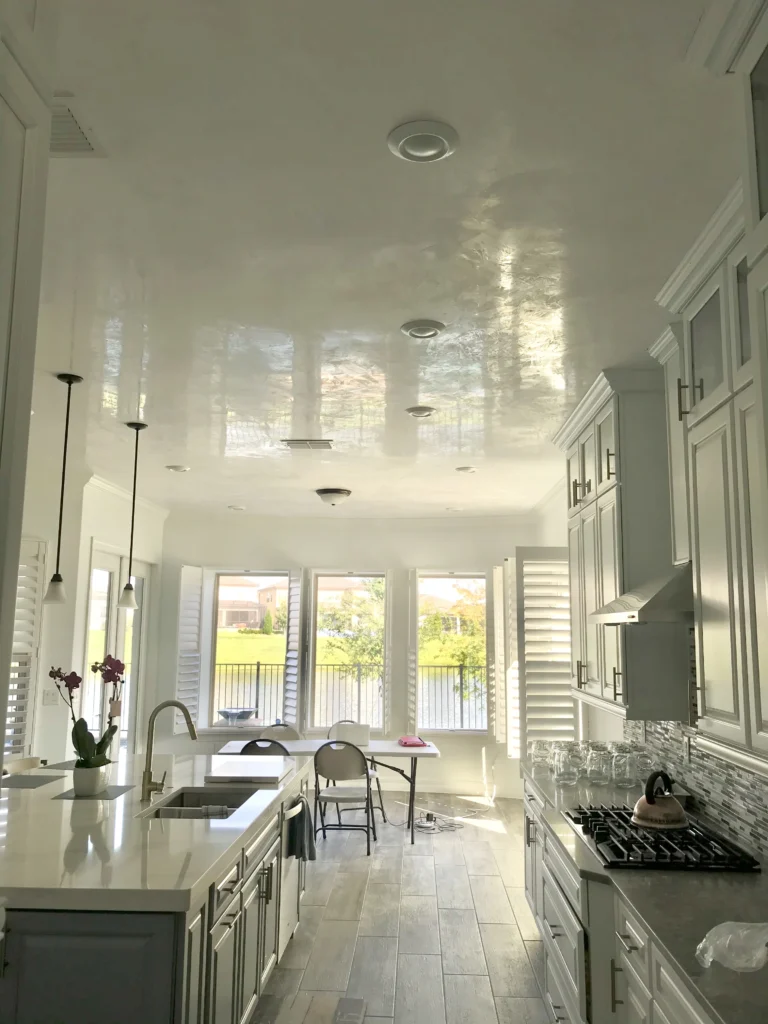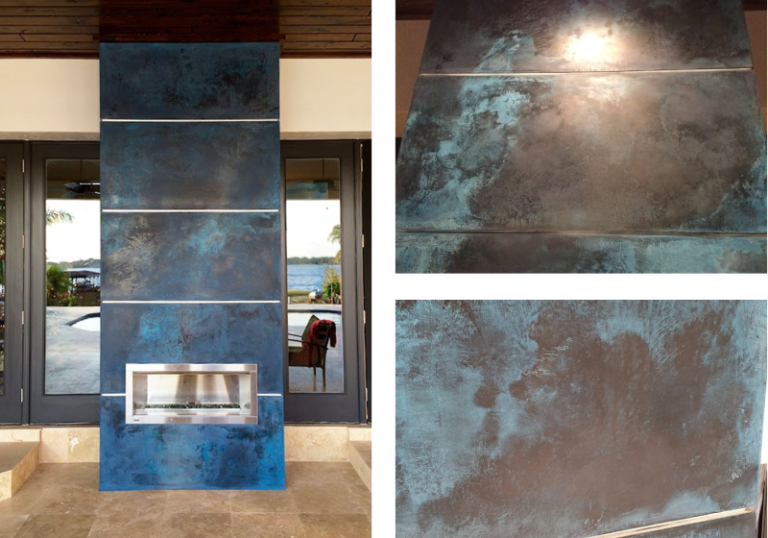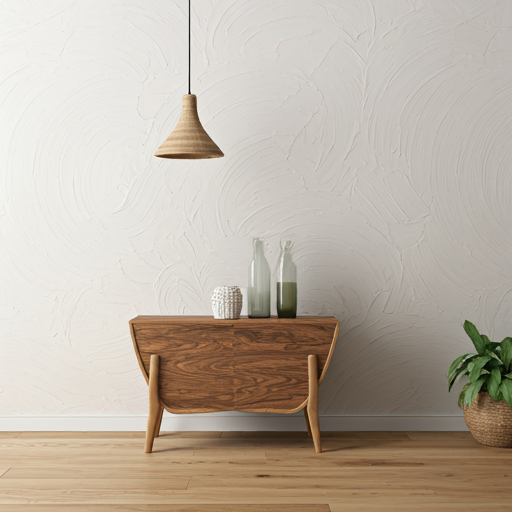Marmorino Plaster vs Venetian Plaster: A Complete Guide to Key Differences
Do you know the difference between Marmorino plaster and Venetian plaster wall finishes?
If your answer is no, don’t worry; you’re not alone!
While both finishes bring a unique elegance to any space, they each have distinct qualities that set them apart.
Whether you’re deciding on a new look for your home or want to learn more about high-end interior design finishes for residential and commercial spaces, this guide will explain everything you need to know about Marmorino Plaster vs Venetian plaster.
Are These Two Different Plasters After All?
Getting straight to the point—yes, Marmorino and Venetian plaster are different.
While Venetian plaster serves as an umbrella term encompassing various types of finishes, including Marmorino, each has unique qualities that set it apart.
The differences between Marmorino and Venetian plaster lie in their textures, durability, and suitability for achieving specific desired finishes.
Let’s take a closer look at what sets these two apart.

What Is Venetian Plaster?
Traditional Venetian plaster consists of slaked lime (calcium hydroxide), marble dust, and water. This simple yet sophisticated combination creates a finish synonymous with luxury and timeless beauty. Unlike conventional paint or bare lime-based plaster, Venetian polished plaster doesn’t just sit on the surface – it bonds with the wall as it cures, creating a breathable finish.
Key characteristics that set Venetian plaster apart:
- Ultra-smooth, glass-like finish when polished to a high shine
- Natural depth and movement within the surface
- Ability to create dramatic marble-like effects
- Slight translucency that captures and plays with light
- Natural matte to high-gloss finish options

What Is Marmorino Plaster?
Marmorino plaster is a specific type of decorative finish that, while often grouped under the broader Venetian plaster category, stands distinct in its own right. The term “marmorino” comes from the Italian word “Marmo,” meaning marble—a fitting name given its traditional Italian composition and final appearance.
The fundamental makeup of Marmorino plaster includes:
- Aged slaked lime
- Finely crushed powdered marble
- Specific additives for workability
- A higher ratio of marble dust compared to traditional Venetian plaster
Key Differences
The fundamental difference between these finishes lies in their composition, specifically their sand content.
Material Composition & Texture
Venetian Plaster:
- Contains minimal to no sand
- Primarily composed of lime putty and marble dust
- Results in an ultra-smooth, polished plaster finish
- Allows for that signature glass-like appearance
Marmorino Plaster:
- It contains a higher proportion of sand
- A mix of lime, marble dust, and varied sand grades
- Creates natural texture and depth
- Provides that characteristic stone-like appearance
Application Process
Venetian Plaster:
- Requires 3-4 thin layers minimum
- More demanding application technique
- Needs expert trowel strokes for that signature shine
- Longer application time between coats
- Requires precise burnishing due to lack of sand
Marmorino Plaster:
- Usually needs 2-3 coats
- A more forgiving application process
- Easier to achieve consistent results
- Shorter waiting time between coats
- Sand content helps guide the troweling process
Durability Factors
Venetian Plaster:
- Best suited for interior applications
- More susceptible to moisture damage
- Requires careful maintenance
- Higher risk of scratching on high-polish finishes
- Less forgiving in high-traffic areas due to smooth surface
Marmorino Plaster:
- Excellent for both interior and exterior use
- Superior moisture resistance
- More durable against daily wear
- Better breathability for wall health
- Sand content provides natural protection against wear
Making Your Choice
Selecting between Venetian plaster and Marmorino plaster depends on understanding your specific needs, budget, and project requirements.
Budget Considerations
From a cost perspective, Venetian plaster typically demands a higher investment due to its complex application process, specialized artisan requirements, and premium Venetian plaster materials.
In contrast, Marmorino plaster offers a more budget-friendly option without sacrificing quality, thanks to its faster application time and the broader availability of skilled applicators.
Pro Tip: Although polished Venetian plaster can be more costly than Marmorino, opting for a matte or satin finish can give you more bang for your buck. A matte finish requires fewer layers and less time to apply, making it a more economical choice while maintaining the same luxurious appeal.
Additionally, with the same amount of plaster, a matte Venetian finish will often extend further than Marmorino, making it an excellent choice if you’re balancing budget with aesthetic impact.
Your Environment Matters
Your environment plays a crucial role in this decision.
Consider your space’s specific conditions—moisture levels, foot traffic, and exposure to elements all impact your finish’s longevity.
While Venetian plaster creates stunning results in protected, low-traffic interior spaces, Marmorino plaster is more versatile and has remarkable durability for both interior and exterior applications.
Maintenance Requirements
When it comes to maintenance, although both of these lime plaster wall finishes require lower maintenance than many other decorative options, Venetian plaster’s smooth, polished surface requires more careful attention—regular dusting with soft cloths and professional intervention for repairs.
Marmorino plaster, with its sand-enriched composition, offers even more forgiving maintenance. Its natural resistance to dirt and ability to handle standard cleaning methods make it a practical choice for busy spaces.
Selecting the Ideal Plastering Expert
When considering application methods, your experience level matters.
Venetian plaster requires skilled artisans, its intricate burnishing techniques and application of multiple thin layers demand years of expertise to achieve the luxurious, polished finish that defines this material.
While Marmorino Fine offers a more forgiving approach, making it a feasible option for an ambitious DIY enthusiast willing to invest time in learning, selecting the most skilled artisan in your area can still be vital.
A professional applicator can help you achieve the exact texture and look you desire, especially if you’re aiming for the best finishes for your home.

Conclusion and Recommendations
Ultimately, choosing between Venetian plaster and Marmorino plaster depends on your project’s unique needs, the ambiance you want to create, and the conditions of the space.
Project-Based Suggestions
Venetian plaster is unmatched in creating a sophisticated, glass-like finish for projects focused on a highly polished, luxurious look. It’s ideal for protected interior spaces where its beauty can shine without high-traffic wear.
Suppose you’re working on a project that demands durability and texture, especially for exterior or high-moisture areas. In that case, Marmorino plaster offers the best of both worlds. Its robust, sand-rich composition is perfect for bathrooms, kitchens, and outdoor applications where resilience is key.
Final Decision Factors
Consider factors like budget, desired texture, and maintenance when making your final choice. Venetian plaster generally requires a higher investment, especially if you choose a polished finish, due to its complex application and the need for skilled artisans. Meanwhile, Marmorino’s quicker application and broader availability can make it a more accessible choice without sacrificing quality.
Next Steps
Once you’ve settled on the best finish for your space, consult with a professional applicator to discuss your specific needs and desired outcomes. If you’re looking for experts in luxury wall finishes, Artesano Craftsmen brings over 16 years of experience in high-end applications, from Venetian plaster to custom Marmorino textures.
FAQ: Common Questions About Venetian and Marmorino Plaster
Which finish is more durable, Venetian plaster or Marmorino plaster?
Both finishes offer impressive durability, but Marmorino is especially robust due to its sand-enriched composition.
Do these plasters need to be sealed?
Yes, sealing can enhance both finishes. Venetian plaster benefits from a protective wax seal, while Marmorino plaster is naturally moisture-resistant.
What color options are available?
Venetian plaster offers a broad palette, while Marmorino highlights earthy tones that enhance its stone-like appearance.
Can these finishes be repaired if damaged?
Venetian plaster typically requires professional repair, while Marmorino allows for easier touch-ups due to its textured surface.
Which finish is better for DIY projects?
While Marmorino plaster is a feasible option for DIY enthusiasts, Venetian plaster requires skilled application.







